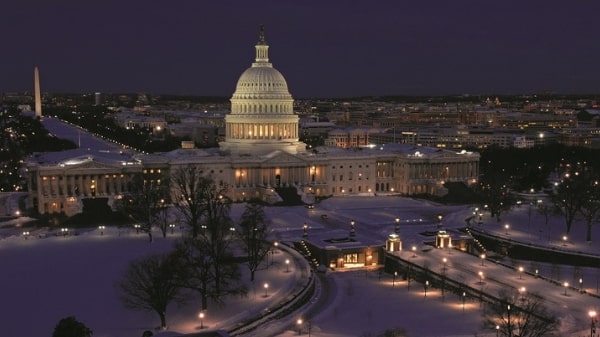Despite its status as the capital of one of the world’s most powerful nations, Washington DC’s standing as an iconic cultural hub has often been eclipsed by New York and Los Angeles. While many assume that this relatively small East Coast city is all about power suits and power plays, such a supposition does the capital something of an injustice.

In fact, beyond its role as the country’s political hub, the 600,000-plus-strong city of DC is also home to an wide array of historical, cultural and artistic experiences. Nowhere is this more evident than in the veritable treasure trove of museums that can be found within its precincts.
Most famously, it is the setting for the world-renowned Smithsonian Institute, an establishment that acts as the mothership for 20 supplementary world-class, free-entry museums, with each having their own distinct focus – whether feting the historical high-fliers who pioneered in developing aeronautics or offering a stark reminder of the horrors of its legacy of slavery.

For a one-of-a-kind experience that can only be found in DC, however, the espionage enamoured should head to the International Spy Museum in Chinatown. Its purpose-built US$162 million building features a huge, neon sign that simply says: ‘Spy’. Unlike many of the more high-minded heritage museums that can be found nearby, this is one establishment where fun is always front of house, an aspect epitomised by the light-hearted romp through the history of spycraft it has on offer, which kicks off with a look at the US’ first spy network, with a 242-year trip back to the time of the Revolutionary War.
Somewhat appropriately, each visitor is issued with their own cover identity upon entry to the building. From there, you can begin your own clandestine investigation into the 10,000 espionage-related artefacts that form the collection, unravelling the truth about such notorious agents as Mata Hari along the way.

Aficionados of American history, meanwhile, are also somewhat spoilt for choice, with a vast array of monuments and iconic structures ready to be explored. Undoubtedly, the most instantly recognisable of these is the White House, home to every US President since 1800. Visitors are allowed to tour designated parts of the building, including the East Room – the scene of many state functions – and the more sombre enclaves where Abraham Lincoln and John F Kennedy were laid in state. Access, though, is strictly limited, with US citizens needing to apply for a pass via their local representative and overseas visitors requiring an endorsement from their own embassies. Not one for a spur-of-the-moment visit then.

Just beyond the White House lies one of DC’s most attractive and best-loved landmarks – the National Mall, a 125-hectare grassy expanse that is home to a surprisingly high number of iconic monuments and a total of 11 Smithsonian-affiliated museums. With approximately 25 million visitors choosing to stroll down the Mall every year, many opt to stop off at the Capitol Building, the official offices of the US Congress and the government’s legislative branch, at its easternmost bounds.
To its rear lies the Library of Congress, which extends majestically across three dedicated buildings. The ultimate repository, it is home to over 164 million books, photos, maps and other documents, a collection said to make it the world’s most comprehensive library. It is also the site of the truly gargantuan Great Hall, a magnificent space, crammed with marble columns, intricate mosaics and nationalistic paintings, rising 75ft from its elaborate flooring to its stained-glass ceiling.

Meandering westwards and midway through the Mall, just a stone’s throw from the Reflection Pool, stands the Washington Monument. At 169m, it’s officially the world’s tallest obelisk, as well as the loftiest predominantly stone structure. Built as a tribute to George Washington, the country’s founding president, its eye-catching blend of marble, bluestone gneiss and granite is, remarkably, held together solely by gravity and friction. Today, a lift affords visitors access to the 500ft level, where a series of photographs can be viewed. The biggest attraction here, though, is the 360-degree panorama of the city viewable from its peak.

Set at the far western end of the Mall is the Lincoln Memorial. Perhaps the most iconic structure in the whole of the park, it stands as an abiding tribute to Abraham Lincoln, the 16th US president and the man who famously preserved the Union by winning the US Civil War (1861-65) and who played a key role in ending slavery. The centrepiece of this impressive marble memorial is an 8.5m statue of the former head of state, surrounded by 36 Doric columns, collectively representing the total number of states in the Union at the time of his death.
If you’re feeling a little peckish after all that perambulation, you couldn’t really be better placed to sample some the finest ambassadors of true American cuisine likely to be found anywhere. While the most convenient options come courtesy of the cafeterias of the countless local museums, for a more haute cuisine experience it’s well worth venturing slightly beyond the National Mall. Here the meat-minded menu-surfer could do far worse than sample the sumptuous carnivorous delights plated at The Capital Grille. Enjoy.
Text: Tenzing Thondup



